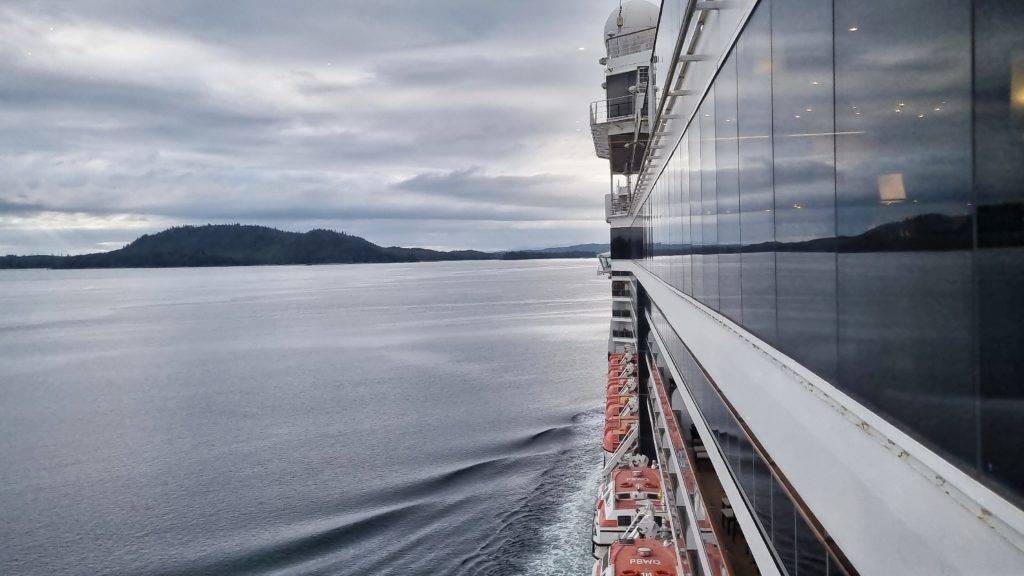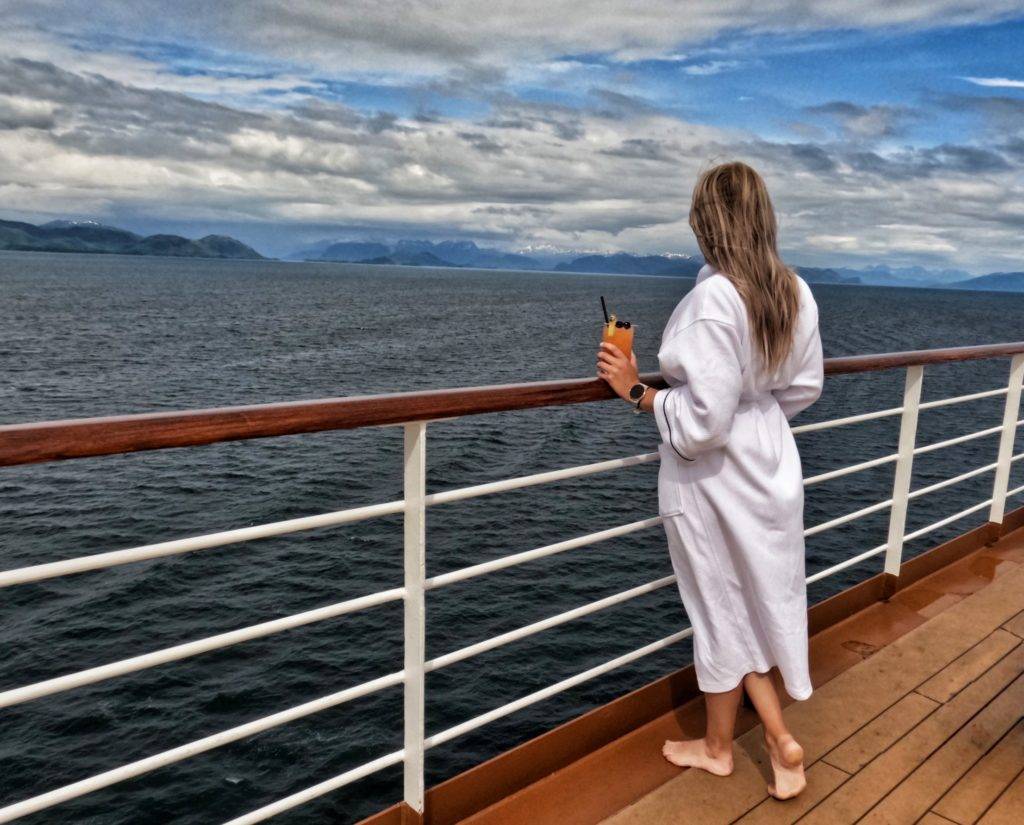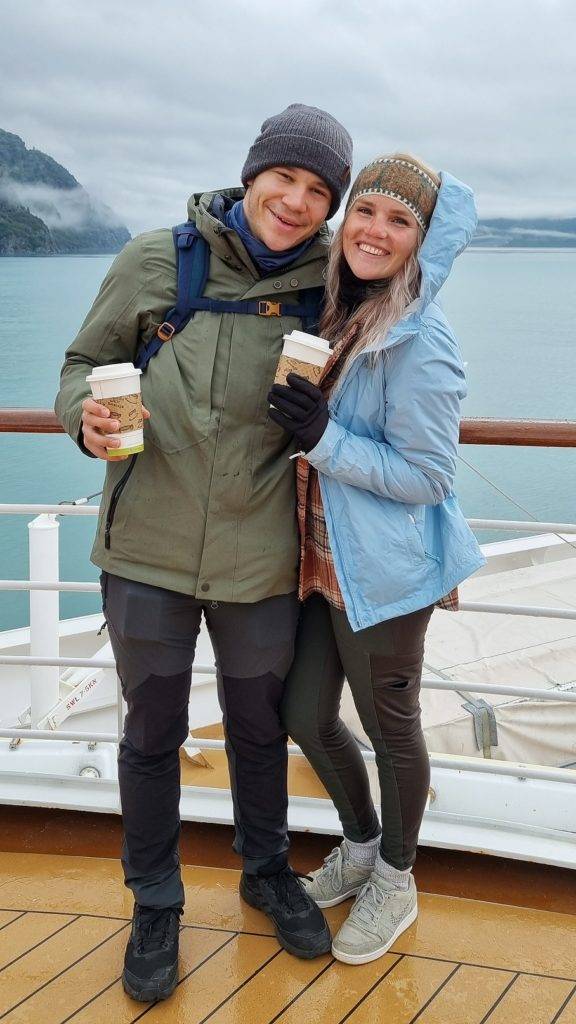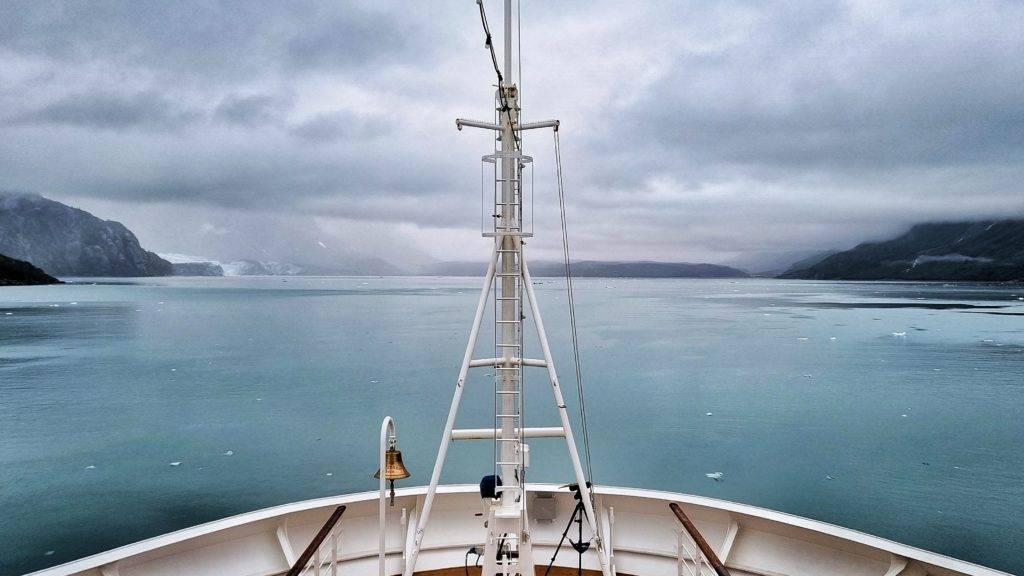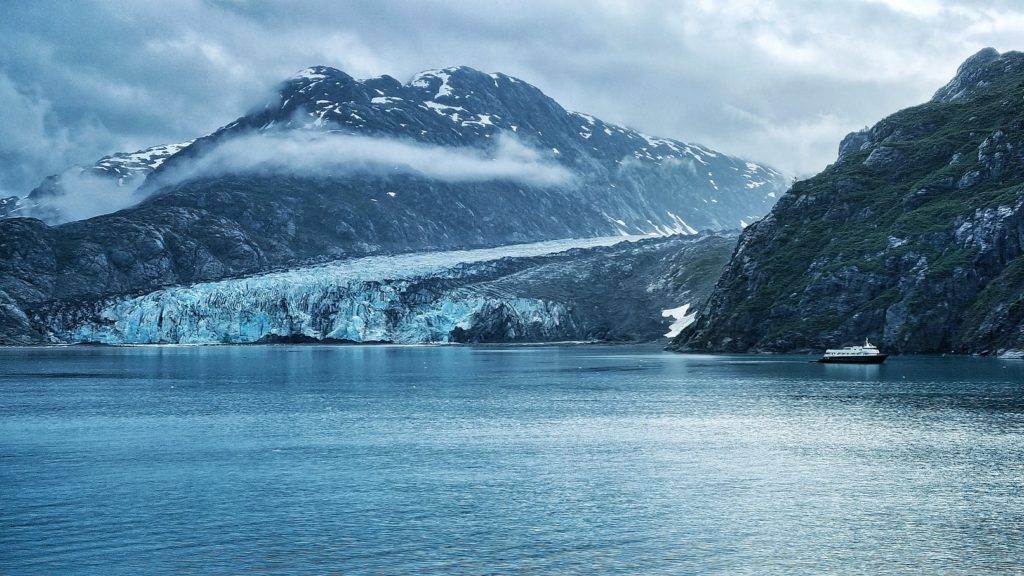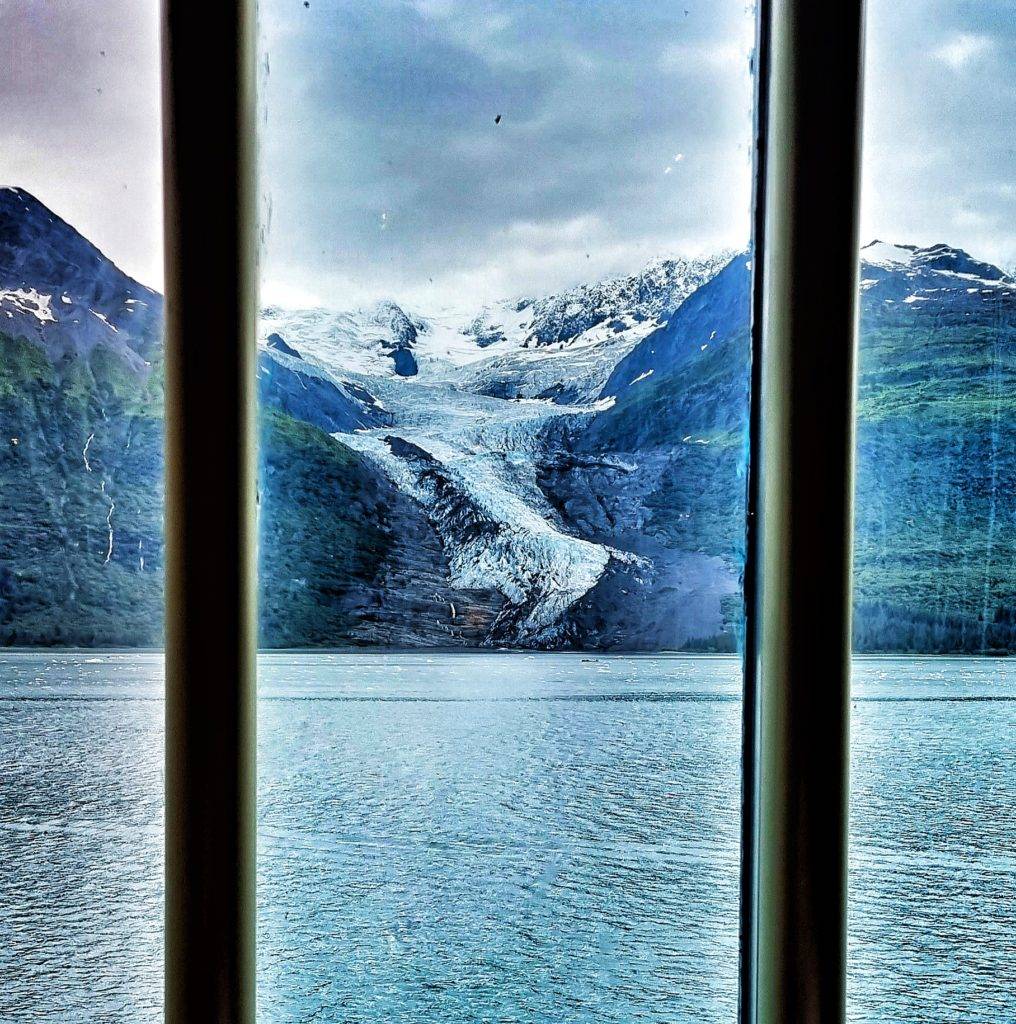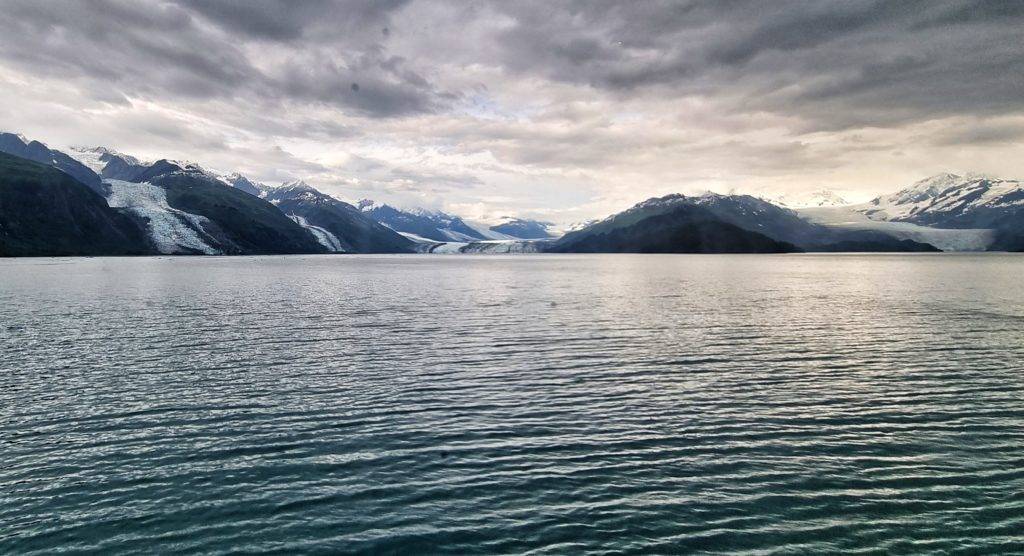North America cruise
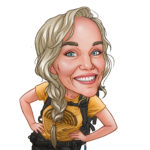
By Jaimy de Vries
Half of July we took a cruise with Holland America Line from Vancouver (Canada) to Alaska (U.S). It’s one of the most scenic cruises with fjords, glaciers and lots of wildlife. And that while being spoiled in luxury: room service, a clean bed twice a day and so much food & cocktails! We were sad when the 7 days of cruising was over. We could do this all the time!
Disembarkation
Two weeks before the cruise, before going to Vancouver, I found out I had COVID-19. Luckily it was more than 10 days prior my embarkation. But I didn’t had any proof of that. I found out I had COVID-19 a week after I was sick (I had a negative self-test before), so I couldn’t get proof of recovery according to the conditions of the cruise company. I needed to cross my fingers & hope that I will get a negative antigen test withing 48 hours prior my embarkation. We did some
self-tests that week and they stayed positive for a while. “Chips!” But just 2 days before embarkation the self test ran negative and so did the official anti-gen test. “Yes, yes, yes!! That was so nerve-breaking!”
On Sunday finally we could disembark on the ship. All the security checks went smooth and we had lunch right away. Great! While having a nice lunch buffet we enjoyed the view over Vancouver and said our goodbye to Canada!
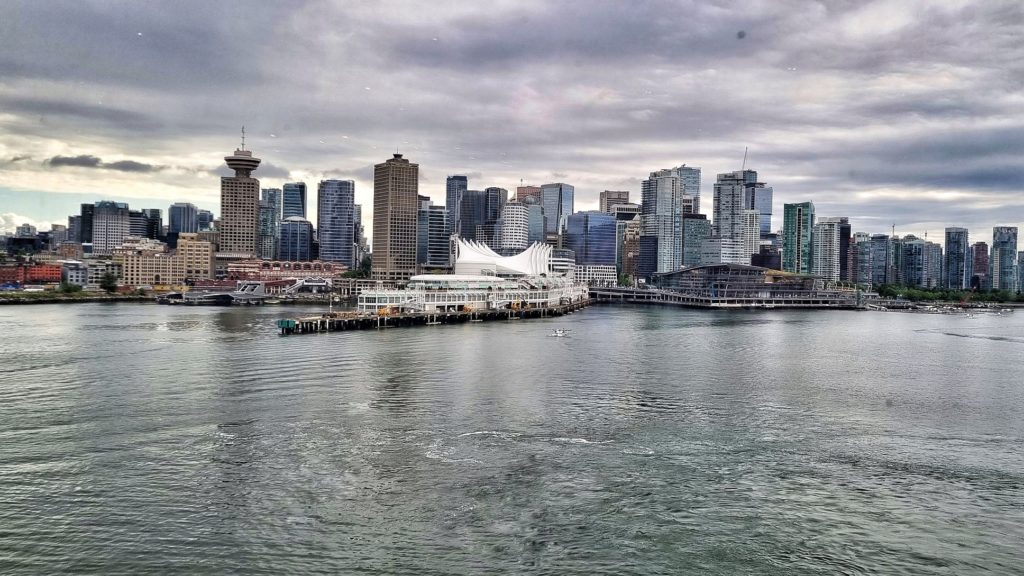
Good service!
The service on board was excellent! Already from the start when we entered the room our baggage was on our bed, we got greeted and welcomed by every crew member and after arrival at 2 pm we could go upstairs for a lunch. We didn’t expected that. While we were eating al those delicious food, like cheesecake, we enjoyed an incredible view over Vancouver city while sailing off to the inside passage.
Everyone on board is so kind. They all are interested about you, they ask you questions how you’re doing, what you’re going to do that day, etc. Most of the time we said we’re going to eat to drink cocktails, because that was our main activity haha. There is plenty of food on board with many choices. You can eat at the buffet or eat at the dining room for a fancy a la carte dinner. You can eat American, Asian, Italian, French food.
Besides eating all those delicious food – what will take 50% of your time on board – there was enough to do on board. You can take a swim at the indoor or outdoor swimming pool, go to the sauna, the gym or play sport games like table tennis. There are plenty of shops on board and a casino. But besides all that, they organize lot’s of activities: like raffle games, seminars, entertainments shows, live music, a comedy show, movies and more. And if you prefer some quiet time in your room, just book room service and watch one of the many movies on your tv.
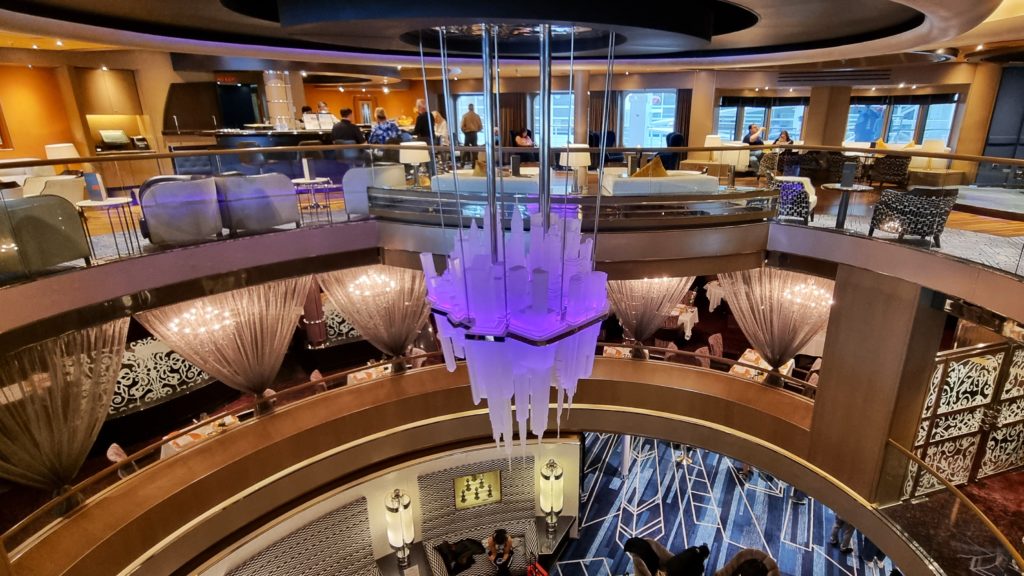
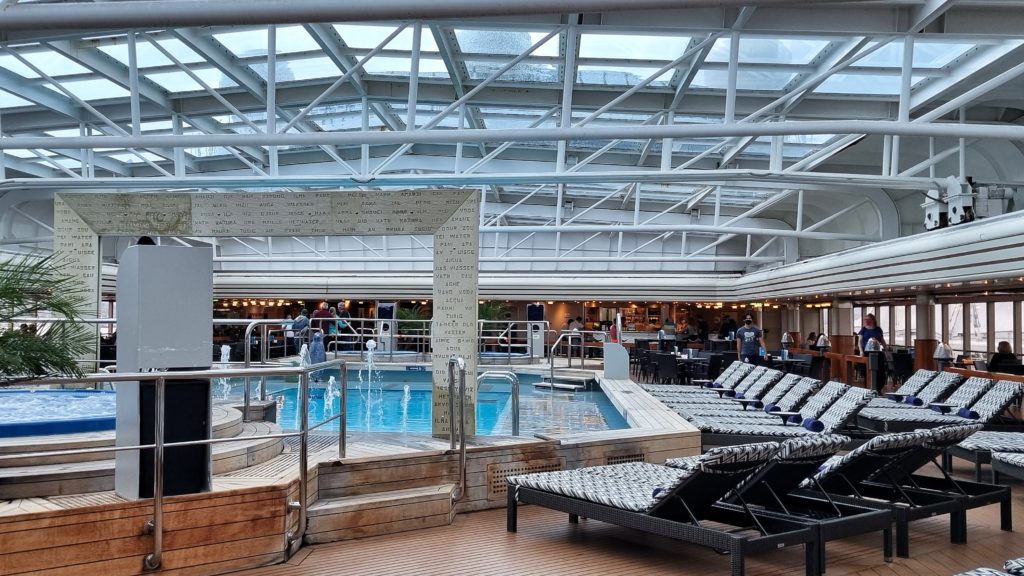
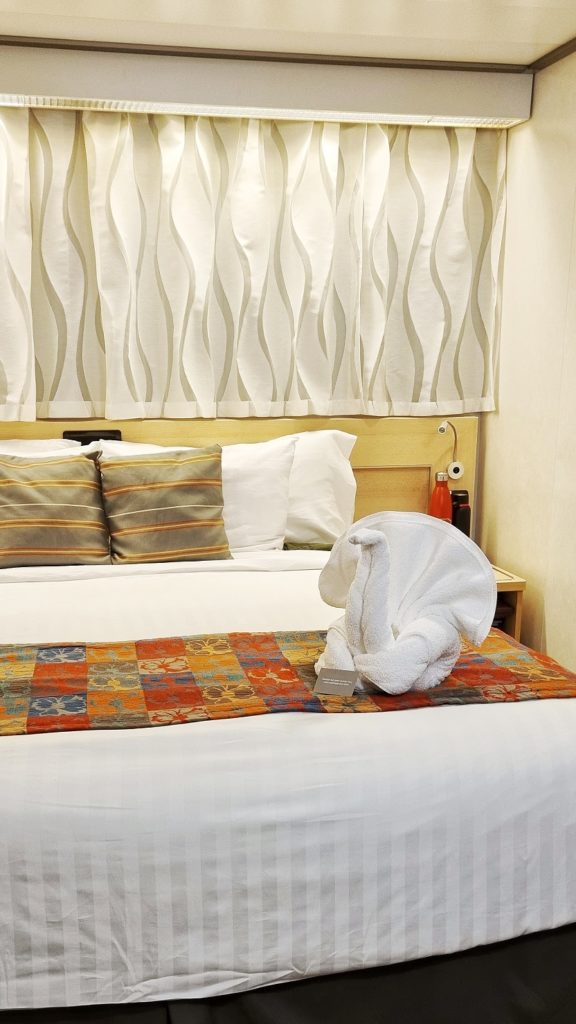
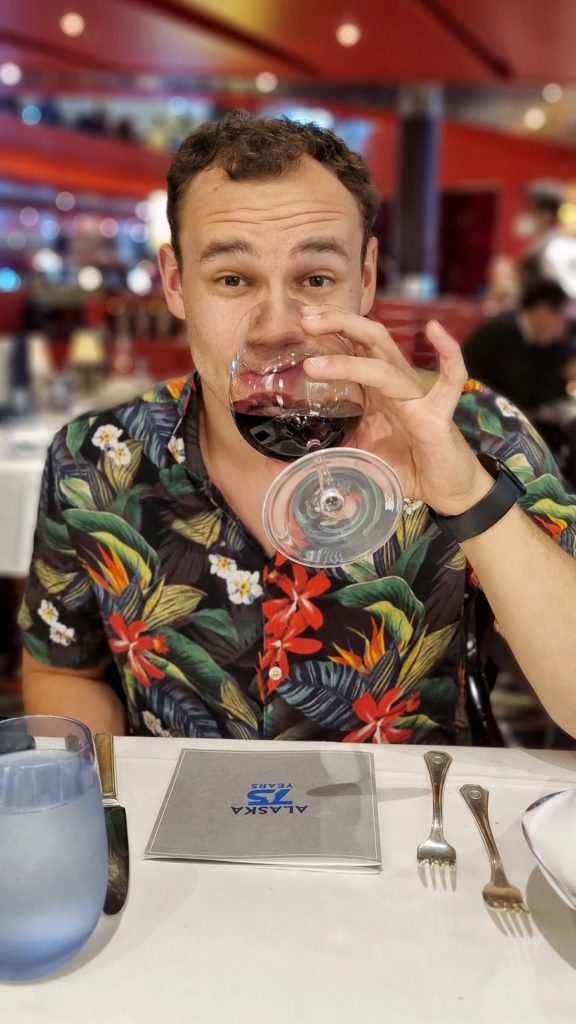
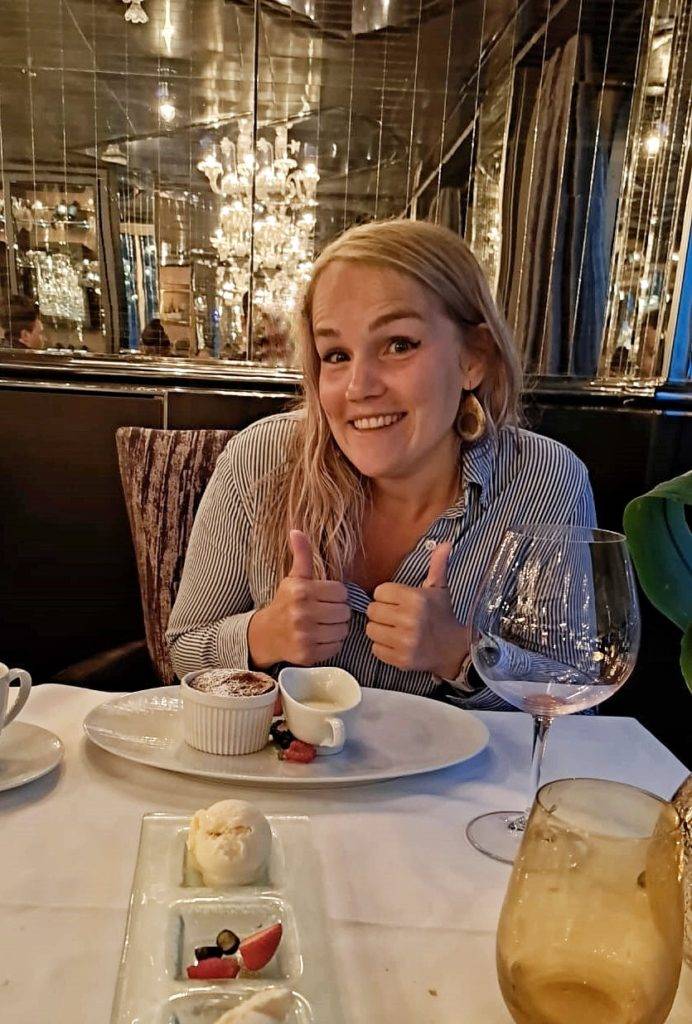
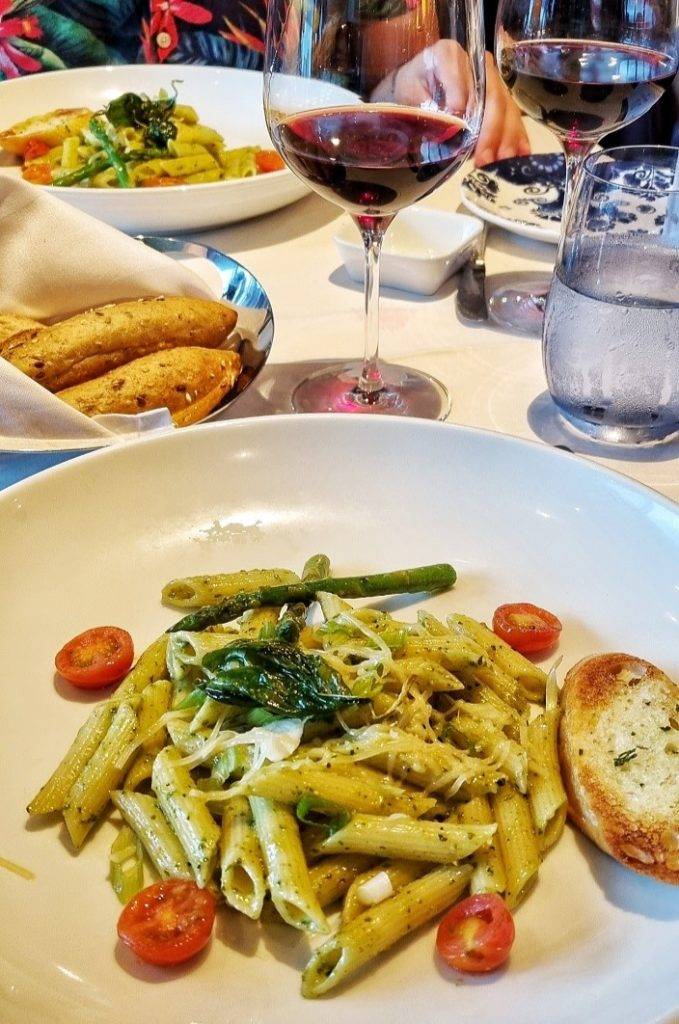
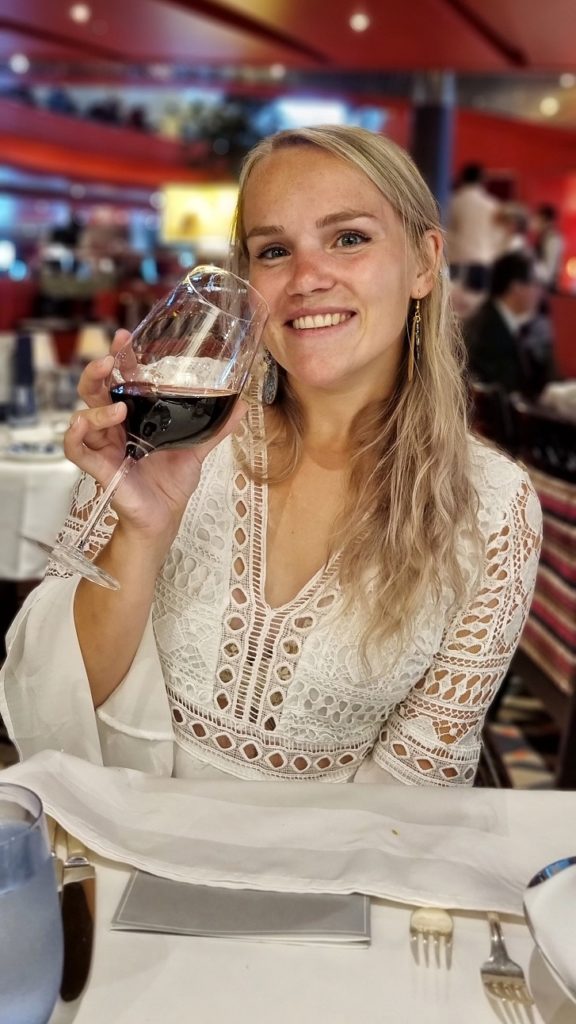
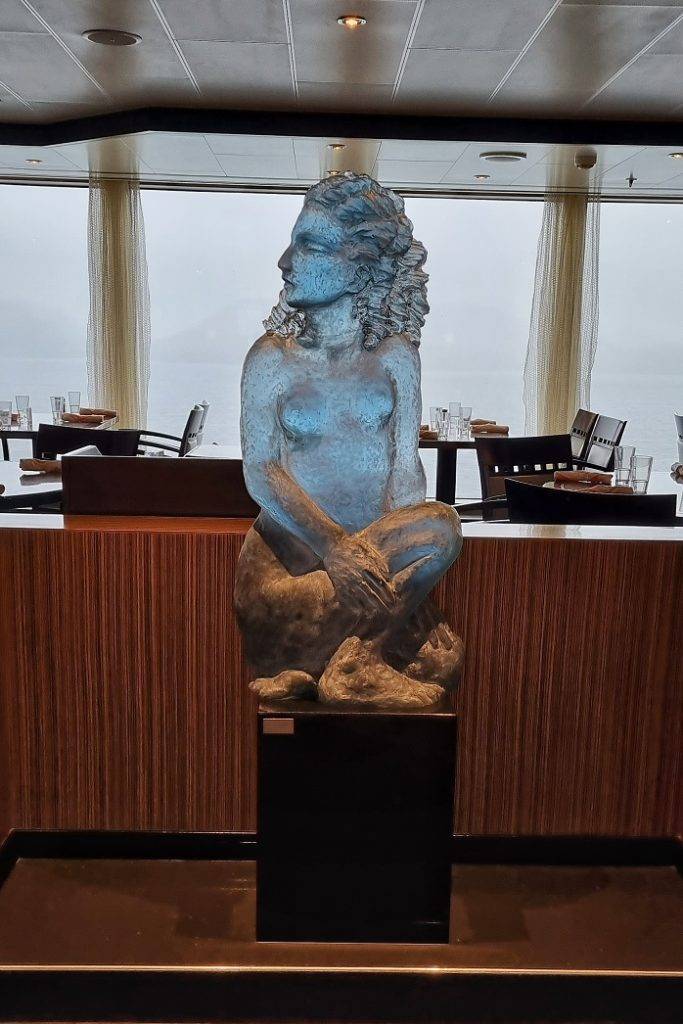
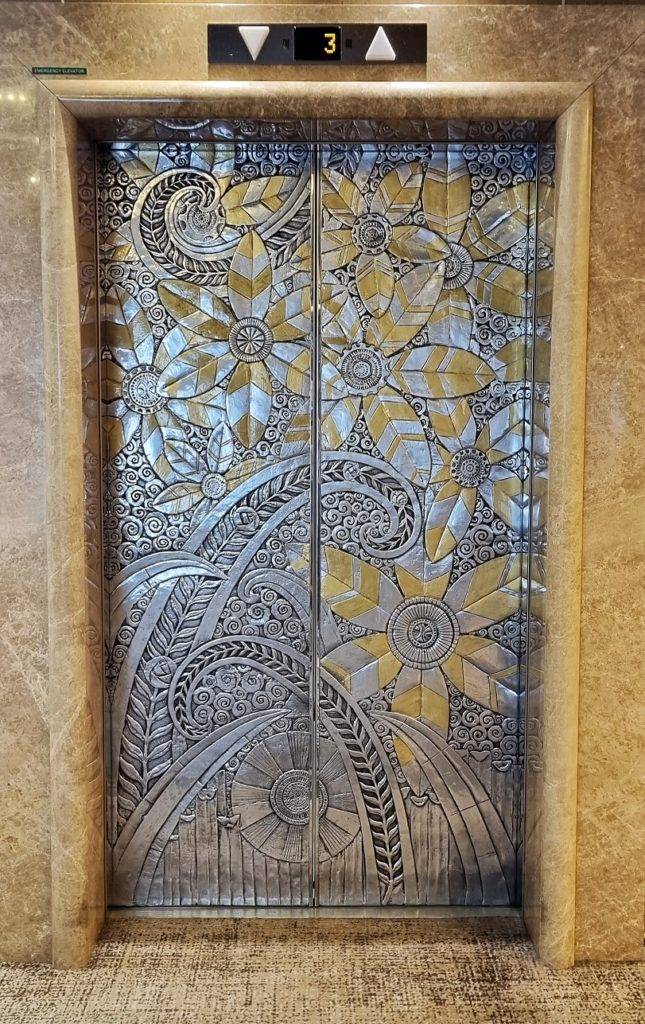
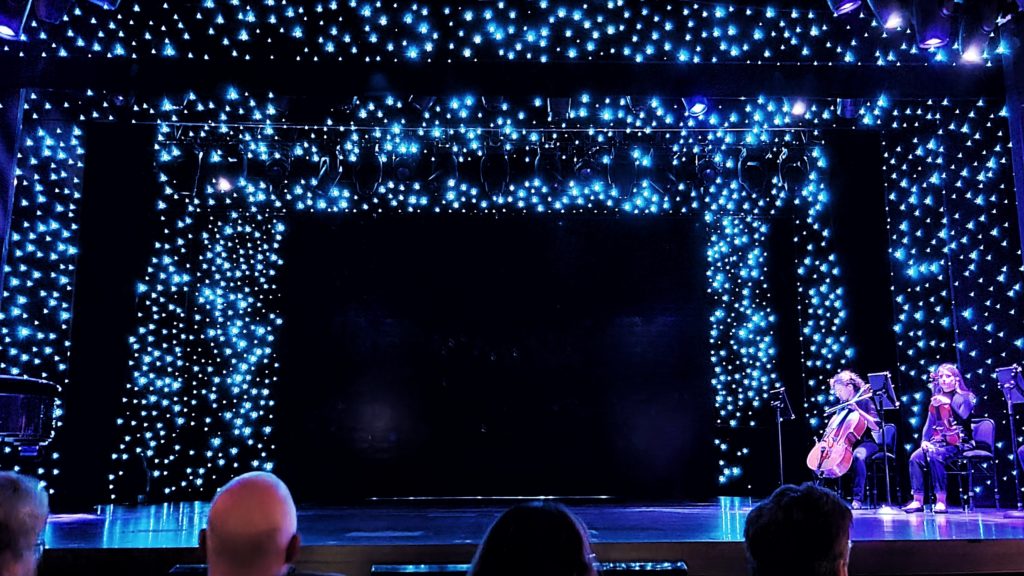
Alaska
And after more than a day of sailing we arrived in Alaska! Our first destination was Ketchikan. While on board we learned some things about Alaska. We found out Alaska was originally from Russia, it’s actually way closer to Russia than other states from the U.S. The U.S bought it in 1867 for $7.2 million in gold; roughly two cents an acre. Quite a laugh for the Russians because it was useless land covered in snow. But the U.S. had the final laugh. Five years later they found lots of gold and that’s when the gold rush started. But luck ran out…eventually there was no gold anymore. But luckily there was black gold what stands for oil. At this moment Alaska is famous for its fishery. So…Unfortunate for Russia but lucky for the U.S…Alaska offers for a century long lots of secrets treasures.
Another interesting thing about Alaska, that unlike other North American countries, Alaska’s population has more than 50% of the natives still living there.
Ketchikan
We were so excited about our stops in Alaska. Our first stop was Ketchikan. Ketchikan has a bustling community of 14000 residents, it’s built right next to the water and backed by forested hills what makes it a beautiful town. It’s a busy town in the summer months with lots of float planes, fishing boats, ferries and cruise ships. Ketchikan is known as the Salmon Capital of the World! It’s a great places for fishing trips. But there is more to do and see in this fishery town than catching salmon. “Good! because I don’t like fishing….”
Unfortunately I was quite sick because of a stomach flu for almost a week when we were on board, so we couldn’t do much on our stops because I simply didn’t had the energy for it, even though how bad I wanted to do more. But still we saw a lot of Ketchikan. First we walked around the waterfront and then took a stroll downtown up to Creek street. This is a famous street with old wooden fishery houses on boardwalks located on a river. Lots of people makes pictures of this street and it’s one of the most famous images of Alaska. All around downtown and Creek street you find lots of fish restaurants and souvenir shops. After visiting downtown we went to the Totem heritage center. There was and still is a big community of the natives (Tlingit) living in Ketchikan and this place is known for their totem poles displayed throughout the town. It was interesting to learn more about their culture and totem poles.
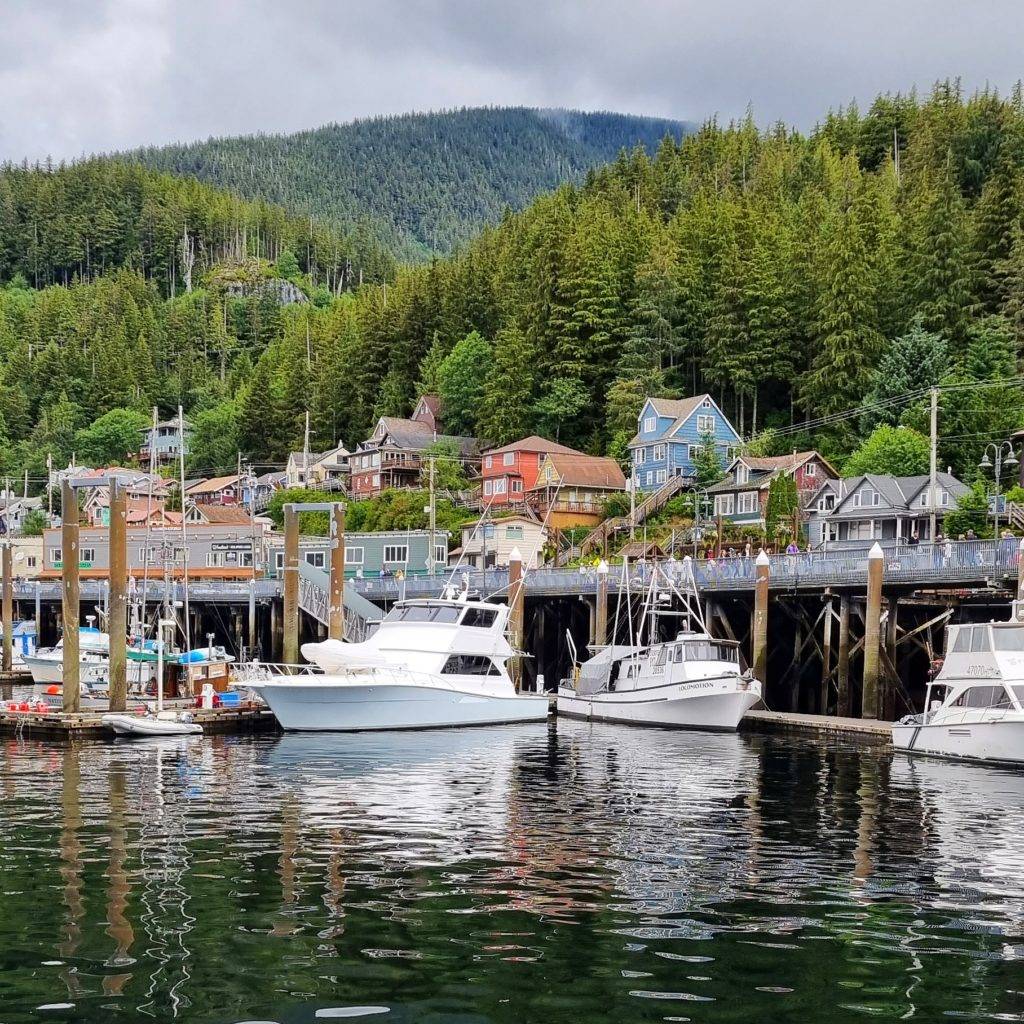
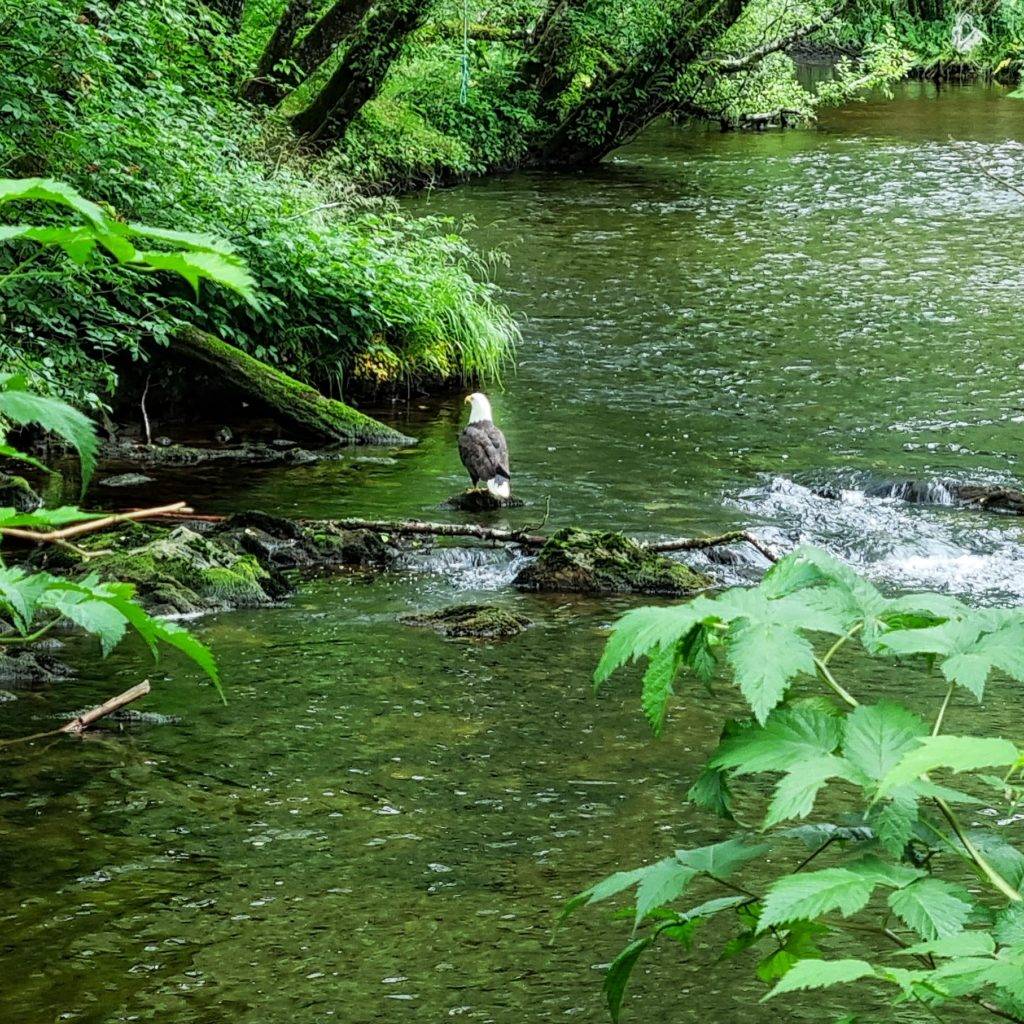
Besides the abundancy of totem poles, there were a lot of bald eagles. You saw them everywhere! In the air, the tree’s, in river stream and on buildings. We wanted to do a hike too that day, but we were too tired. We went back inside, went for a nice meal and I took a long nap.
Here a short summary of the best things to do in Ketchikan: take a stroll on Creek street and visit the old brothel, take a crab eating & lumberjack tour (if you haven’t seen a lumberjack show so far), go zip-lining, go on a hike (Deer mountain trail, rainbird trail).
Wildlife watching
One of the activities on the cruise was spotting wildlife with our naturalist. The thing is, wildlife doesn’t like to sleep-in. They’re most active early in the morning. So our wildlife spotting activity started at 5:30 am. “Oef! That’s early” But we wanted to see this, so we woke up early, grabbed a cup of coffee and walked to the outside deck. Luckily we saw a groups of humpback whales and sea otters. Still they were quite far away and we didn’t had a binocular. We didn’t got a real good look at them. But we were happy…getting up early was not for nothing!
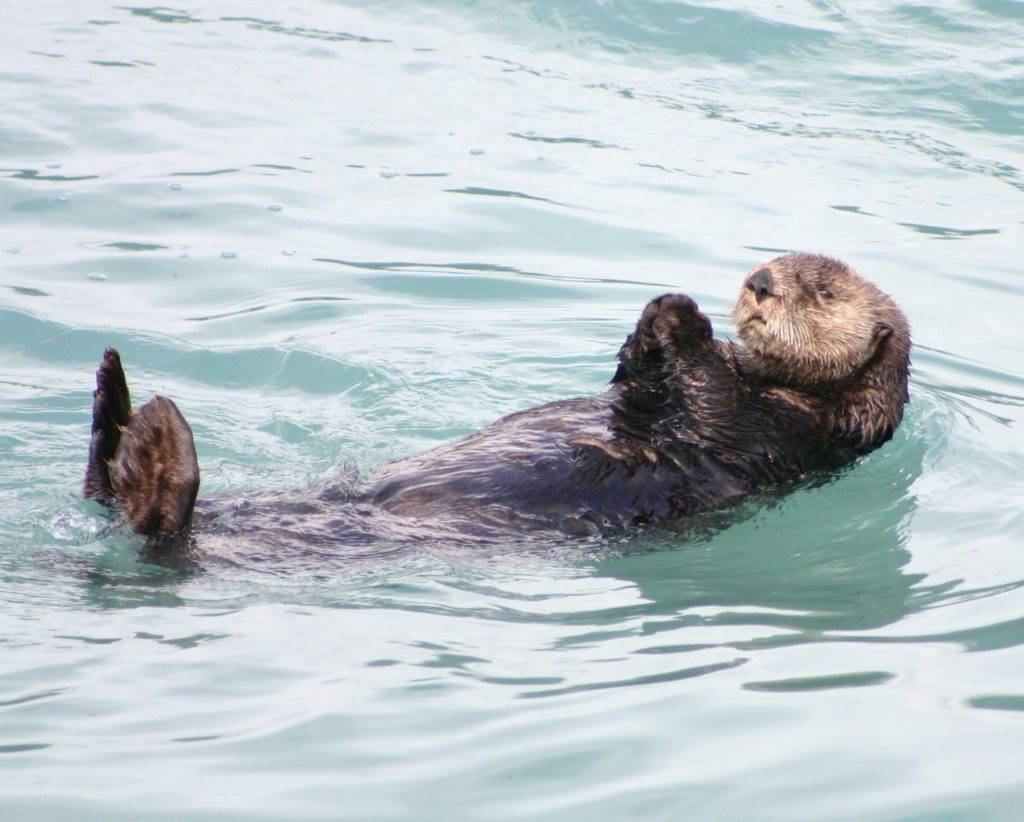
An abundant animal in these Alaskan waters are the adorable sea otters. We did learn some fun facts about them from our naturalist. Sea otters are really big, they can weight more than 45-90 pounds. Unlike most other marine mammals, otters lack a blubber layer. Instead, they depend on their dense, water-resistant fur to provide insulation. They have the thickest fur of any animal. What very cool is, is that they use tools. They collect rocks, to play with them, but also to break open hard-shelled prey. They keep it under their armpit to store. Sometimes when they really like a rock, they will keep it with them for about a year.
Juneau
On our second stop we went to Juneau. Juneau is the main capital of Alaska. It’s a nice town with the same charm as Ketchikan, also located on the water and surrounded by mountains and rainforest. But as an addition, Juneau is close to the Glacier Bay national park and close you have the famous Mendenhall glacier that you can visit. Juneau is only reachable by plane or boat.
We took a stroll to the old city, what was not very special. You’ll find mainly souvenir and jewelry shops. The day we arrived in Juneau it was pouring rain. What turned out to be not so unusual, because it rains 300 days in a year. Due to the bad weather and we still wanted to see some wildlife from up close, we were looking for a whale watching tour. They said on the internet that Juneau is one of the best places in the world for whale watching. It’s expensive but we got a nice deal, almost 50% cheaper than offered by the cruise. They said on the internet that Juneau is one of the best places in the world for whale watching and they guaranteed we would see whales. So, we were convinced to go.
A bus took us to another harbor from where we embarked on a boat. The weather was really bad, it was pouring rain. But luckily whales don’t mind some rain pouring out of the sky. When we left the harbor we saw many seals and American bald eagles, a promising start. And we were lucky (they said)! We saw a group of humpback whales bubble-net hunting and later a group of four orcas! That was really cool! Unfortunately, still all the animals were far away. We didn’t saw a whale from up close like you’ll see on social media. So we’re not sure if the trip was worth our money. Or maybe our expectations are too high.
We learned that the humpback whales stay here in the bay for half a year, the other half year they cross the sea to go breading in Hawaii. After that they cross the ocean with their cubs and come back to Alaska. The guides talked about their eating habits. They eat small fish and plankton. “But why do they eat small fish, right? They’re huge, why not eat bigger fish?” We asked this question and it turned out this is because their throat is so small, like the size of a grapefruit.
That day I was still feeling sick and tired from the stomach flu, after arriving back from the whale watching tour, we were really cold and it was still pouring rain. We decided to go back to the boat, have a nice hot shower, a pizza lunch and a nap. After our nap we went to the guest service because we had a question about a bill on my credit card. We found out we have a semi-elite package and all the drinks, cocktails, wine, iced coffee, are included. And we can make a dinner reservation at one of the (paid) fancy restaurants on board. “What!?” We immediately made use of it. We made a dinner reservation and went to the jacuzzi where they delivered us some nice cocktails. Afterwards we had an amazing dinner with a funny Dutch waiter. It was a good end of our day.
Here a short summary of the best things to do in Juneau: visit the Mendenhall glacier, walk on Juneau Icefield, go on a whale watching trip, visit the museums and the historic downtown.
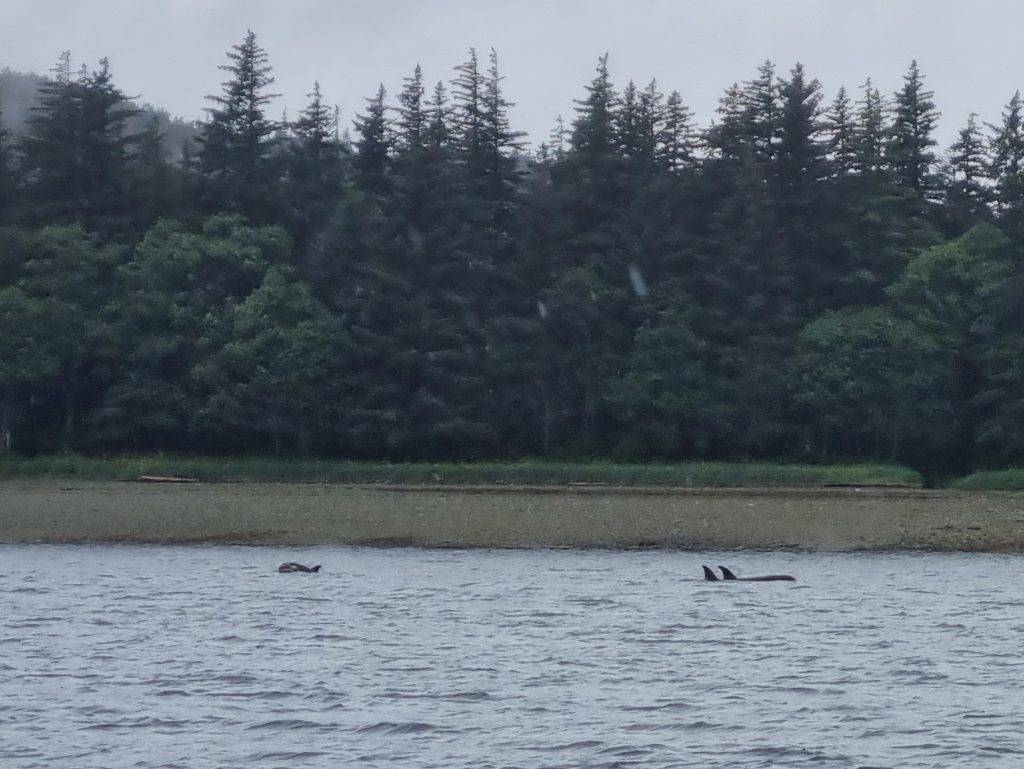
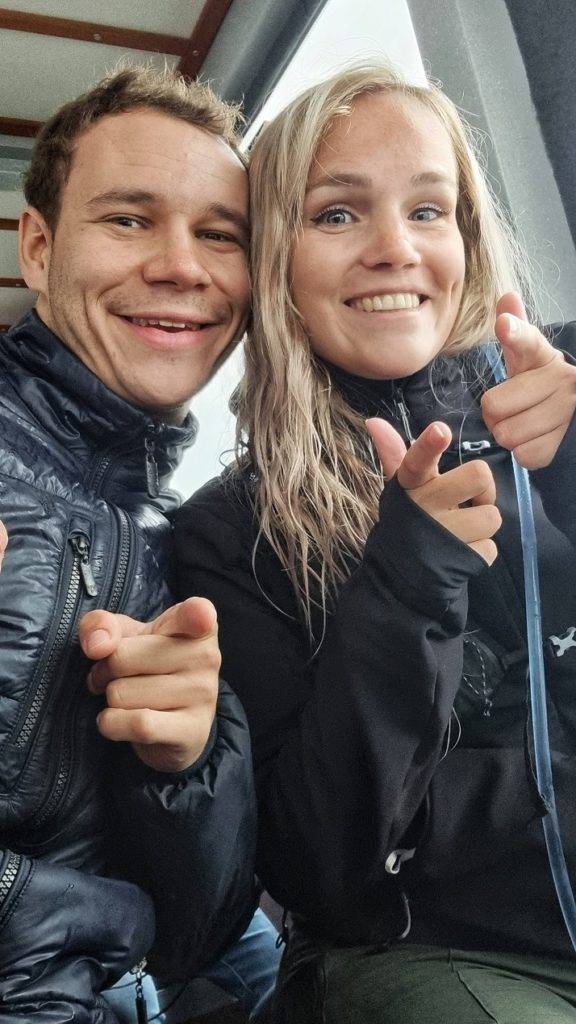
Kroshcel wildlife refuge
The next day we arrived in Skagway. We woke up early and went on an excursion to the Haines Kroschel refuge. The bus took us to a harbor from where we took a ferry to Haines, a small town of 2500 residents. At arrival, again we were transported by bus, we needed to drive to the refuge in a about 20 minutes. It was a long way up to the refuge. But was definitely worth it.
We were welcomed by Steve Kroschel himself. A very thriven and energetic person. He makes everyone happy and shares some of that energy of him with us. A real showman! He showed us his refuge like it was a movie scene. And we got to come so close to the animals. I even called and pet a porcupine. So much fun! It was our best tour so far. We saw many animals: wolves, wolverine, owl,
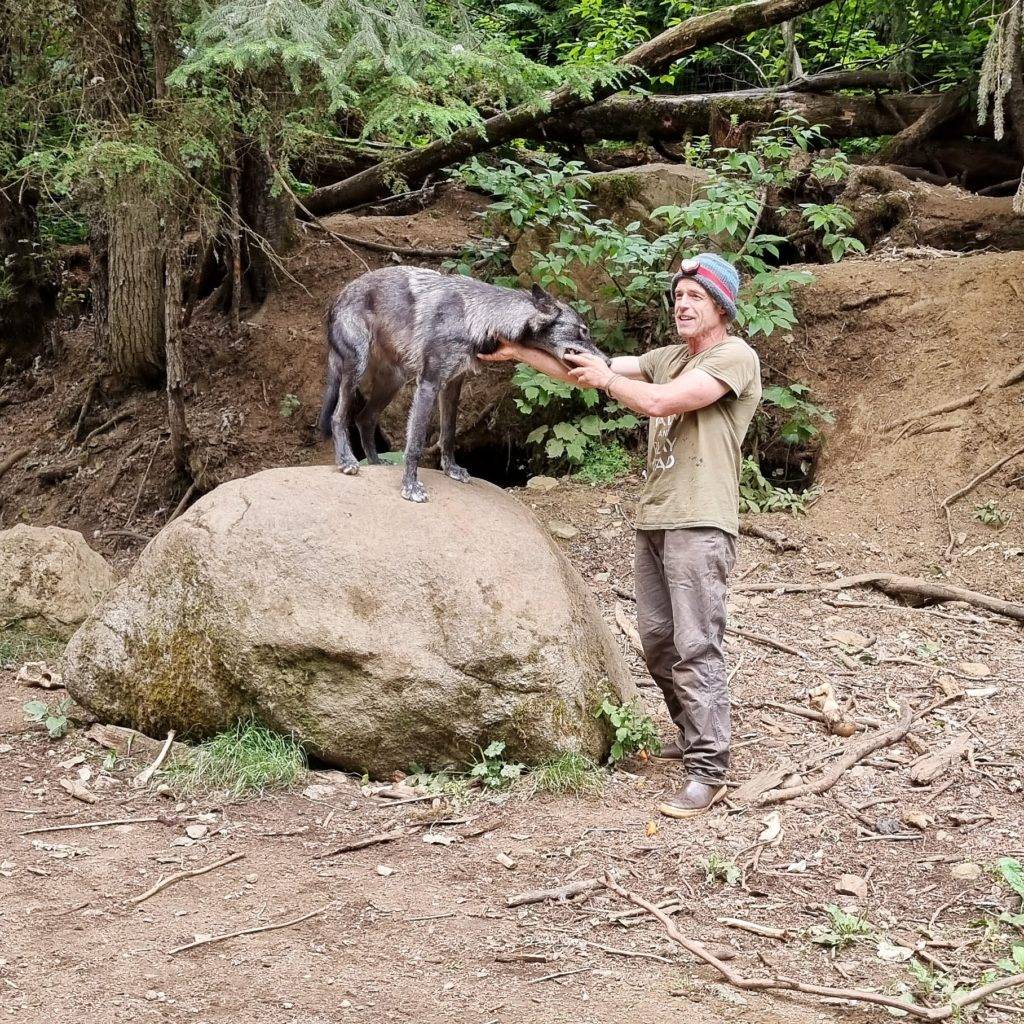
porcupine, lynx, fox, moose, caribou, fret, and….a grizzly bear. At the end we were at a big fence and he said call kitty kitty. So we all called: “kitty, kitty kitty”….and suddenly a huge grizzly bear came running towards us. “Wow haha!”. Did not expect that! I was also so amazed by the baby wolf, she looked so cute … but meanwhile you can see it’s not a dog, it has huge paws!!
You can’t compare Kroschel with any other park, not a zoo, not a show, not a movie scene…it’s just so unique! I would definitely recommend it!
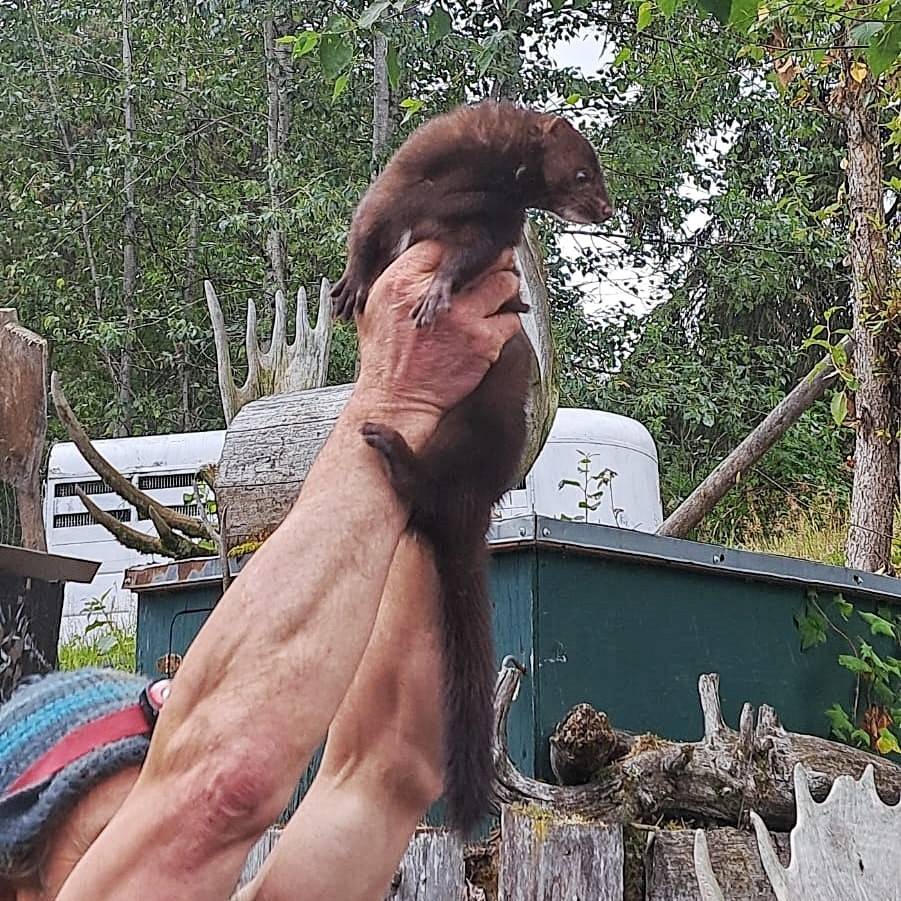
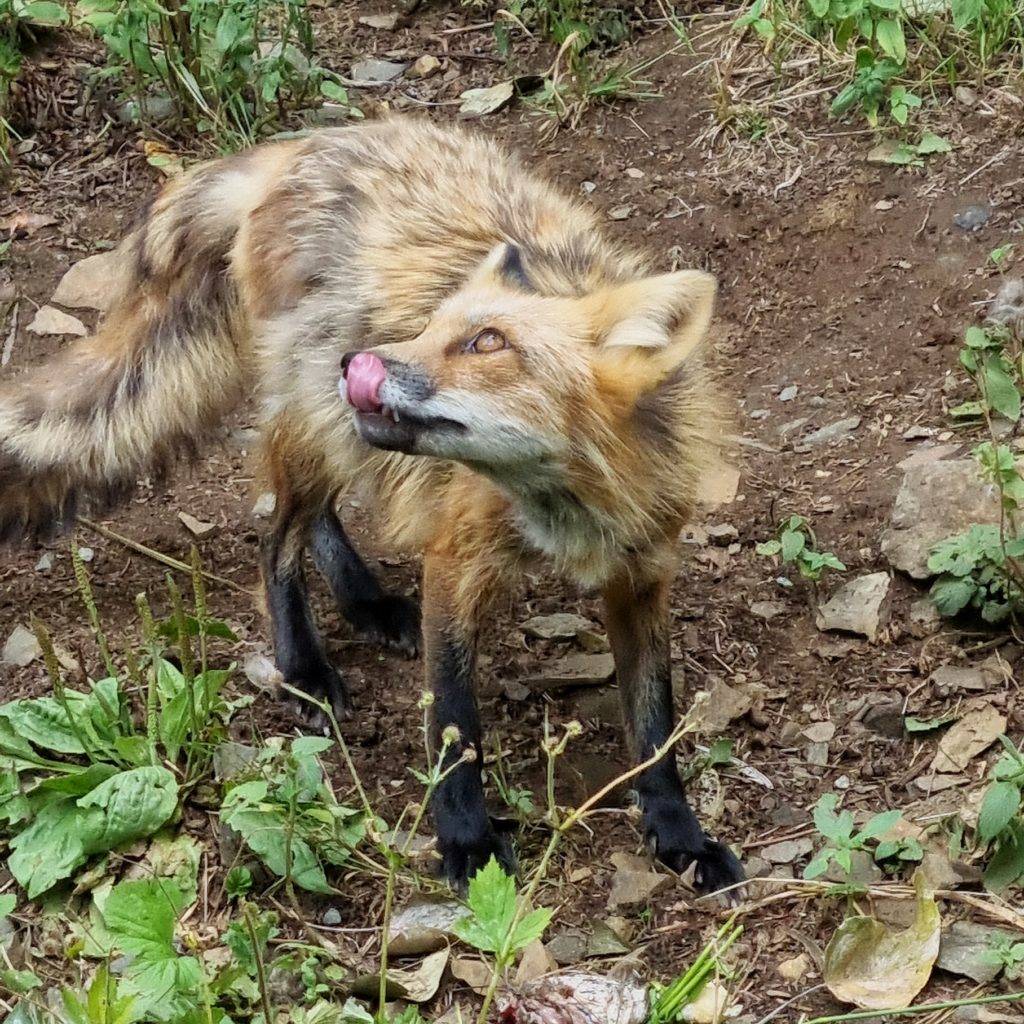
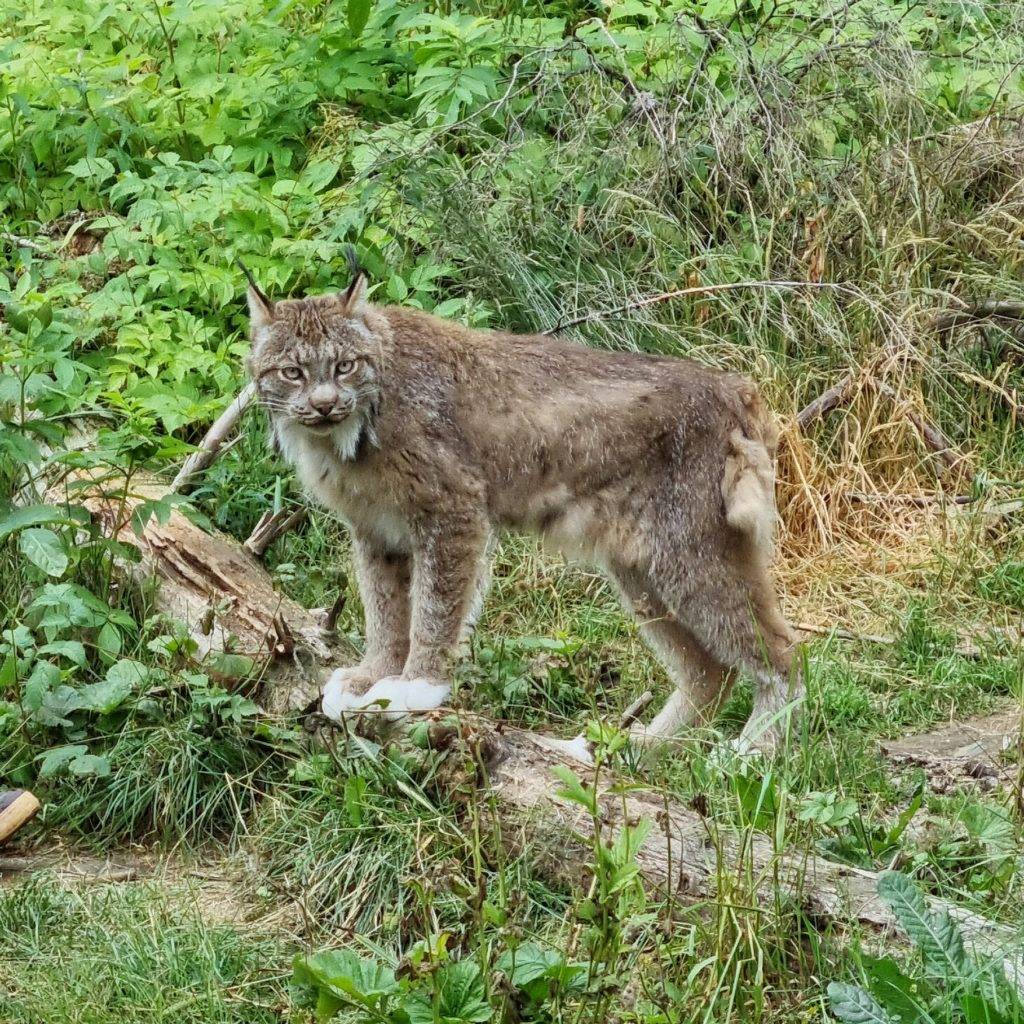
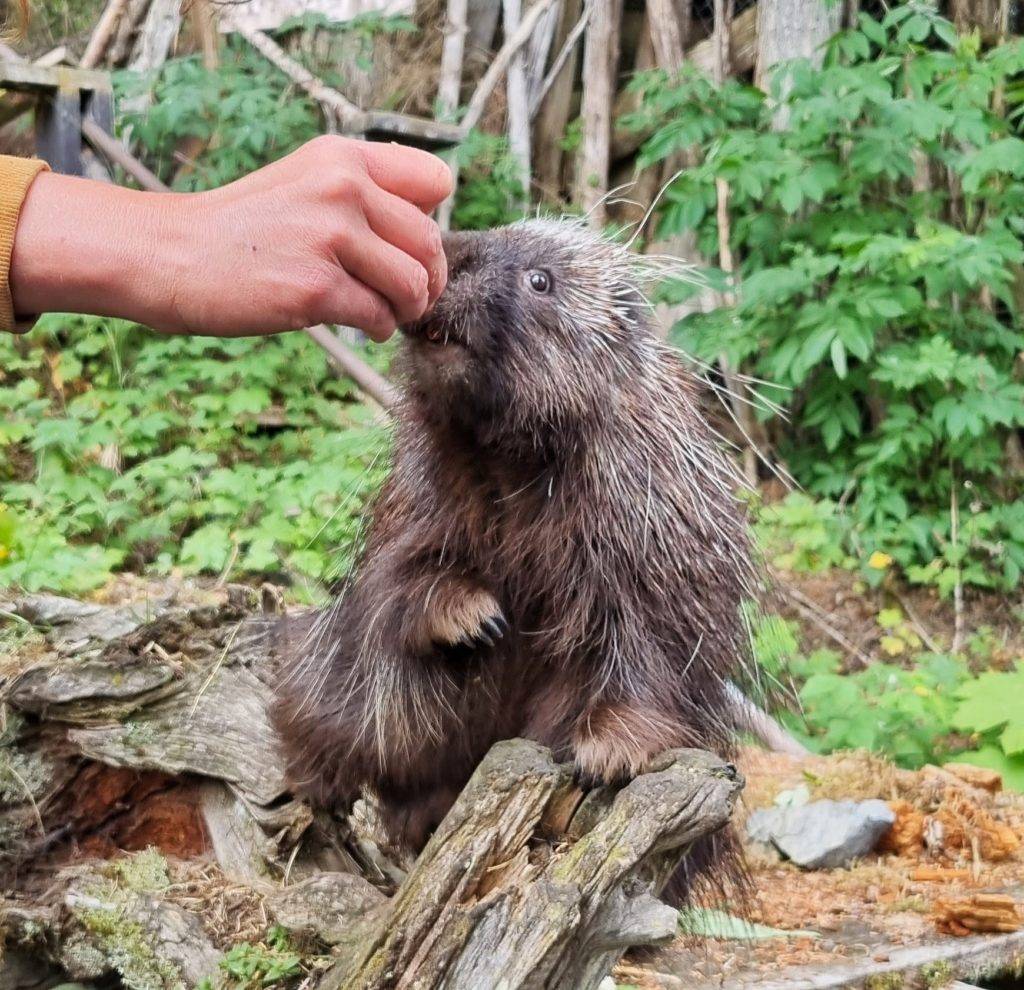
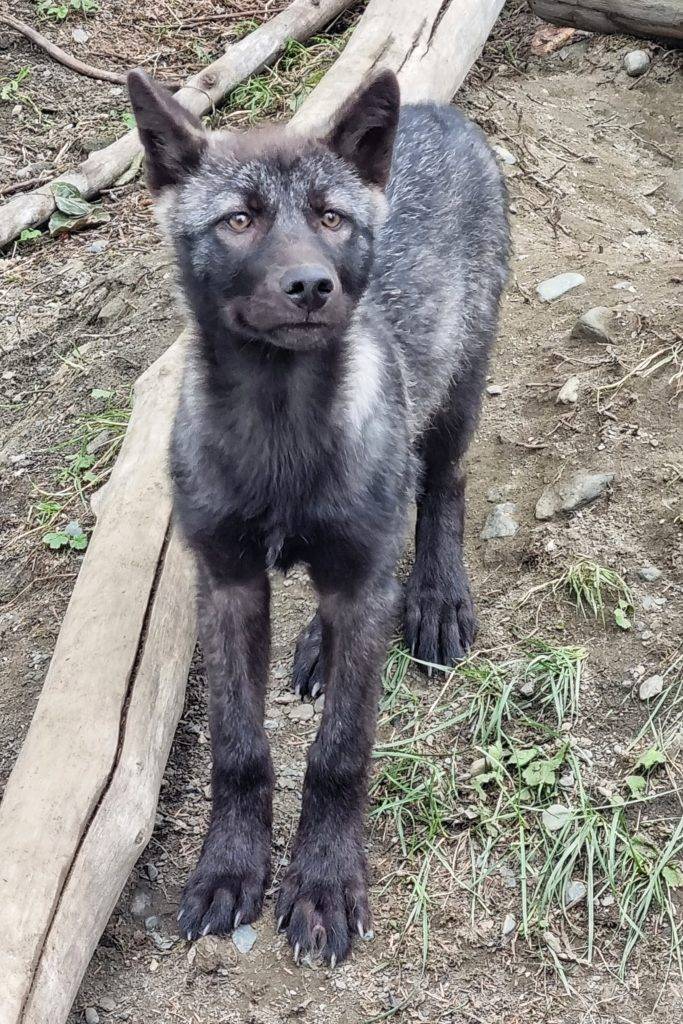
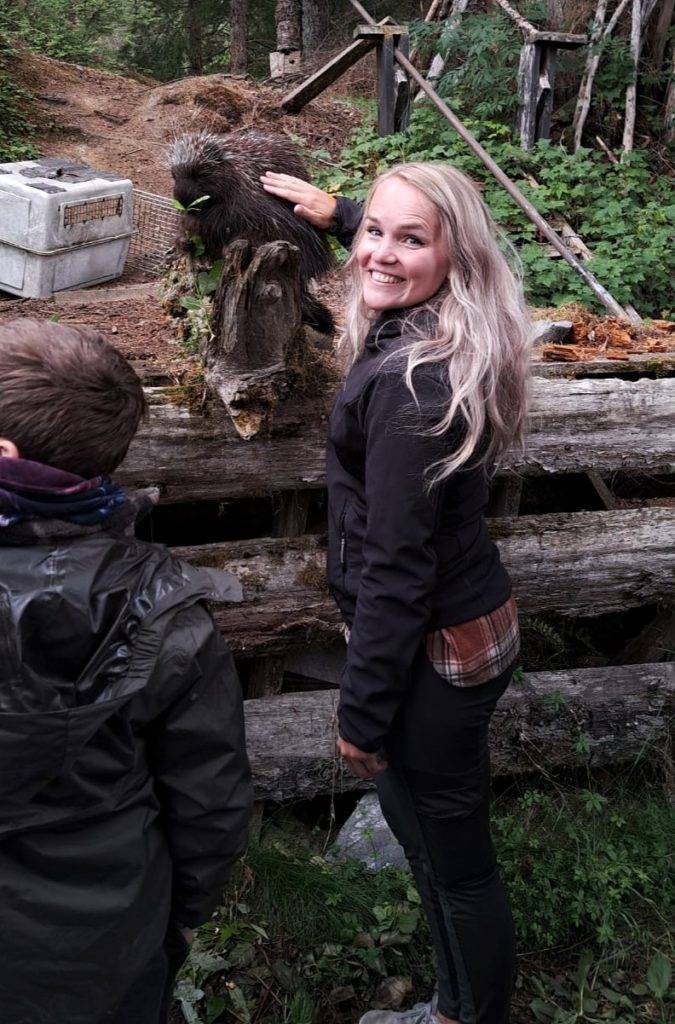
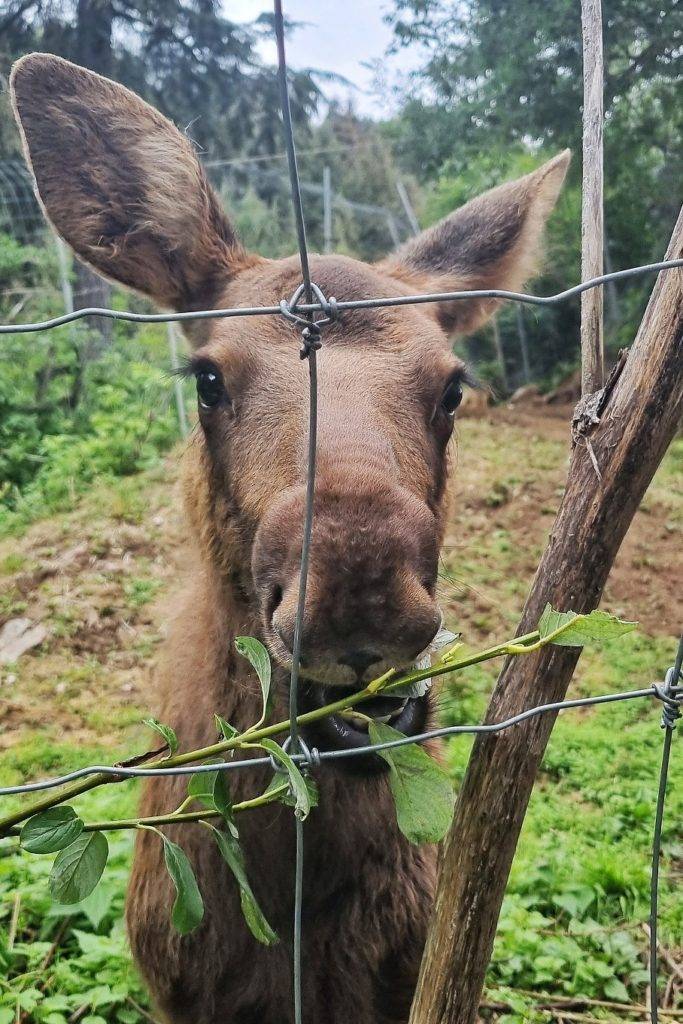
SKagway
After our tour to the refuge it was already quite late, so we haven’t seen much of Skagway itself. Sadly, because it’s definitely worth a visit. Skagway was the primary gateway to the legendary gold fields. That time it was a raucous frontier hub packed with trading posts, saloons and guesthouses. As the gold rush faded into the 1900s, so did Skagway—but today it has been reinvigorated as a gateway for a new kind of visitor: those looking to explore Alaska’s colorful history, pristine wildlife and unrivaled natural beauty.
Here a short summary of the best things to do in Skagway: on number one the Haines Kroschel wildlife refuge, White Pass & Yukon Route railroad, explore the old city of Skagway, visit the Klondike Gold Rush National Historical Park, Chilkoot Trail
Glacier bay
Afterward Skagway we headed out to Glacier Bay national park. It’s the largest national park in Southeast Alaska, the world’s largest protected marine sanctuary, and a World Heritage Site. The marine wilderness of Glacier Bay National Park and Preserve includes tidewater glaciers, snow-capped mountain ranges, ocean coastlines, deep fjords, and freshwater rivers and lakes.
Before we entered the Glacier Bay we went outside. It was a bit cold and wet, but if you’re dressed appropriate it’s an amazing experience to watch it from the outside deck. It was beautiful, magnificent you can better say! We were sailing between fjords and saw many Glaciers, like the Margerie glacier and Ferris Glacier.
We learned that 200 years ago these shorelines were completely covered by ice. The glaciers seen here today are remnants of a general ice advance ‘the Little Ice Age’ that began about 4,000 years ago and reached its maximum extent here around 1750.
That afternoon there was a seminar about the Glacier Bay National park. A ranger talked about what a glacier is, what kind of different types there are, why some glaciers look so brownish/black, and why glacier water has a milky color. We also got to see how the Glaciers are changing, or rather say disappearing. That’s always so depressing to see. But to reassure you a bit, there are still many glaciers!! I’ve seen more than 50 glaciers so far.
I’ll give you a short summary about what the ranger told us about glaciers. So to start: “What makes a glacier different than just an icefield?” Well a glacier is made by layers and layers of snow that got heavier and heavier. Air gets out what makes the iced water denser and that’s how the snow got turned into ice. When this ice mass is flowing or moving, than it’s a glacier! So the difference between a glacier and an icefield is, is that a glacier moves. Glaciers can have a very blue color because of the density of the ice. But sometimes a glacier looks dark, almost black. That’s because when a glaciers moves really slow, rock degree gets the chance to get on the Glacier. All glaciers move a lot of rock degree that’s rich of minerals. Eventually these minerals gets in the water of – depending on the location of the glacier – a lake, river or even the sea, what creates a milky color of the water.
Glacier bay is a dynamic natural system. Still there is a lot of life to discover, especially now when the ice is melting. You see flora & fauna disappearing, but also new ones appearing.
